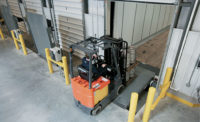As manufacturers learned about the seven wastes that lean organizations seek to eliminate — overproduction, waiting, conveyance/movement, processing, inventory, motion, and correction — many added an eighth: underutilized talent.
This waste is most common — and most damaging to morale and bottom line — among frontline workers.
Why? Usually because of outdated management structures in which employees are seen as:
- Replaceable: Some managers view frontline employees as interchangeable laborers, easily replaced. In fact, many firms deploy temporary employees rather than developing committed, long-term associates.
- Incapable: At many organizations, frontline workers aren’t recognized as potential problem-solvers — which typically excludes them (and their knowledge) from improvement initiatives.
- Entitled: Some executives worry that involvement of frontline staff in daily management and improvement efforts will spur demands for enhanced compensation.
- Threats: In command-and-control cultures, managers and supervisors have all the answers — and are “go-to” individuals when problems arise. These leaders can be reluctant to relinquish control and firefighting roles, fearing that they’ll no longer be needed.
These misperceptions are costly, because frontline employees often know far more about their work and plant processes than anyone else (including management). They also know how their daily actions impact — for good or ill — plant outcomes that determine overall business performance (quality, speed, costs, etc.), as well as their own safety, and the safety of the community.
Changing these misperceptions is critical to driving improvement. If managers seem unconcerned about employee welfare — whether in terms of safety, compensation, or workplace engagement — an organization develops a culture in which employees are perversely incentivized to do as little as possible. Yet when trust and concern is demonstrated by managers, and employee roles are expanded, frontline workers embrace new responsibilities — fixing problems and improving processes without management involvement.
How can manufacturers create a powerful workforce in which everyone contributes? It’s as clear as 1, 2, 3, E.
1. Engage/involve
Start business conversations with staff, in which managers ask frontline employees to describe their processes and work. You — and your managers — will be surprised how much you learn.
Interview employees about what they do and why they do it. This isn’t an interrogation, but an opportunity for workers to identify actions and processes they deem faulty and/or unnecessary.
Ask about issues that bother employees, and then solicit suggestions for how to change troublesome processes or policies.
Formalize this approach into a dedicated employee suggestion program. Commit to responding in some manner to every suggestion, no matter how big, small, or odd. Ignoring suggestions will destroy efforts to engage employees.
Keep frontline staff informed of plant changes, and the reasons behind them. You’re asking them for ideas; they should be able to quiz you, too.
2. Educate
Some frontline associates may lack basic skills for their jobs. Start by making sure that all have the technical training to safely perform their roles.
Help frontline employees learn how to improve their work. Offer process improvement/lean training to develop problem-solving skills, and provide financial training so staff can see how their actions drive bottom-line results.
Provide soft-skills training (communication, team building, running a meeting, etc.) to foster collaboration. This training also will help to identify and develop managerial talent.
3. Empower
Organize frontline workers into teams focused on specific best practices, which enable them to “own” operations performances. The logical activity with which to initially engage frontline employees is safety. Management selects employees to staff a safety committee, which is then responsible for monitoring operations, auditing work practices, reporting near-misses, etc. Frontline employees “own” the safety of their environment. Similar teams are then formed to address daily maintenance and startup of equipment, 5S workplace organization, production control, and other day-to-day activities.
Empower frontline associates to solve problems and improve processes. If a problem can be addressed quickly without negatively impacting other processes or functions, employee teams will act immediately to establish a new best practice (standardized work). For more complex problems, teams will enlist management support and schedule dedicated time (rapid improvement event/projects) to work on the issues. Continuous improvement becomes a daily part of everyone’s job, and not just an occasional responsibility.
Involve frontline staff in plant changes and decision-making; they’re no longer just recipients of information, but participants in the strategic direction of the plant.
Every level of the organization must buy into the 3E framework if this culture change is to work:
- Senior executives must be visible and vocal about changes to come, commit to a sustainable performance management system that will guide all staff, help managers to revise their traditional roles, and challenge frontline staff to get involved.
- Managers must embrace their new roles and responsibilities in coaching/mentoring, improvement project guidance, and providing support, data, and tools to frontline workers.
- Frontline associates must accept their expanded roles and new parameters of authority.
Implementation
Fully implemented, the 3E framework delivers lasting benefits. Instead of a handful of managers putting out fires, all employees identify problems and apply permanent fixes. Rather than being distracted by EHS issues, frontline workers improve their own safety and environmental conditions. These associates then bring this same ownership to quality, cost, delivery, and financial performances.
Implementing a 3E employee-improvement framework, businesses in every industry can derive greater value from their workforces. The results from 3E and the subsequent culture change can be profound. To realize these improvements, start by assessing your current operations and selecting model areas for improvement. Then identify specific improvement projects and assemble frontline teams. Implementing the tools and problem-solving techniques needed for continuous improvement allows managers and frontline employees to be successful.
How much talent in your organization is wasted? More importantly, what will you do about it?



